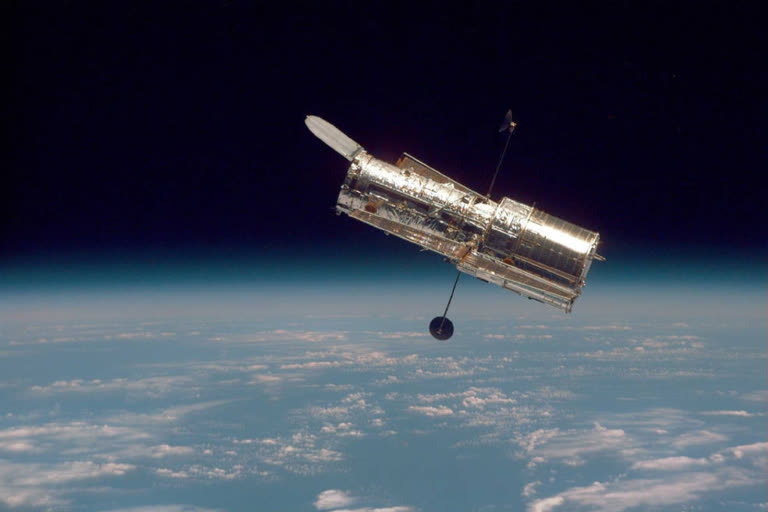Washington: NASA's Hubble Space Telescope celebrates its 30th birthday on Friday.
Hubble's successor, the James Webb Space Telescope, was meant to be launched in 2018 but was delayed till 2021.
Now, NASA has stopped testing operations due to the coronavirus pandemic.
NASA released two stunning images to mark the 30th anniversary of the space telescope which shows two distant nebulas, named "NGC 2020" and "NGC 2014".
A full decade in the making, Hubble rocketed into orbit aboard space shuttle Discovery 30 years ago, on 24 April 1990.
NASA wanted an observatory free of the atmosphere's distortion and in some cases, absorption of light.
Stars, for example, do not appear to twinkle when seen from space. The telescope was named after American astronomer Edwin Hubble, who in the 1920s determined the universe is expanding.
Read Also: Britain reports nearly 20,000 deaths from virus
But sky-high excitement of the Hubble launch turned into bottomless agony when it became apparent the telescope's primary mirror had been botched during manufacturing, resulting in blurry eyesight.
Three years later, with NASA's reputation and entire future on the line, a team of astronauts managed to restore Hubble's promised vision with replacement parts.
Shuttle astronauts have visited Hubble five times, from 1993 to 2009, to make improvements and repairs to the 43-foot-long observatory, about the size of a school bus.
Read Also: Prince William, Kate lead UK royals in clap to thank NHS
Early on, Hubble proved the existence of supermassive black holes and found they're located at the center of most galaxies.
It also helped pinpoint the age of the universe at 13.8 billion years old, by determining the current rate of expansion of the universe with an uncertainty of just three percent.
"We were blown away when we first saw these images," said space researcher Jeff Hester in 1995.
"I mean, there are things in astronomy that you live for and what we felt when we first saw these pictures come up on the screen are among those things."
NASA says Hubble has peered back to capture light from distant galaxies that have taken more 13.4 billion years to reach us.
It has made over 1.4 million observations. Astronomers have used them to write over 17,000 scientific papers.
Hubble travels 17,000 miles-per-hour and orbits 340 miles above the Earth's surface. The space telescope completes one orbit around Earth every 95 minutes.
In 2018, two astronomers used Hubble to discover what may be the first moon orbiting a planet outside of our solar system.
The planet orbits a star called "Kepler-1625b" and is about the size of Jupiter. The potential exomoon is about the size of Neptune.
Initially, researchers used NASA'S Kepler Space Telescope to identify the potential moon. They then turned to Hubble and observed what they believe to be the potential moon's fourth transit.
"We knew there wasn't enough data with Kepler unless we asked Hubble, which is a much more powerful telescope," explains Columbia University researcher David Kipping.
"We get four-times more precise data using Hubble than we do with Kepler. And that gives you a resolution power to see these tiny signatures that Kepler missed."
Hubble's successor, the James Webb Space Telescope, originally due to be launched in 2018, will view from a vantage point one million miles away.
But it has been delayed several times. And will now fly no earlier than 2021.
Last month, NASA announced it had suspended integration and testing operations on the space telescope, due to the coronavirus pandemic.
James Webb will specialize in the infrared wavelength, allowing it to peer into some of the faintest, most distant recesses of the universe.
This should enable the telescope - named after the late NASA administrator who guided the Mercury and Gemini programs and set the stage for the Apollo moon landings - to look back even farther in time than Hubble and detect galaxies formed a mere 200 million years following the Big Bang.
(AP)



